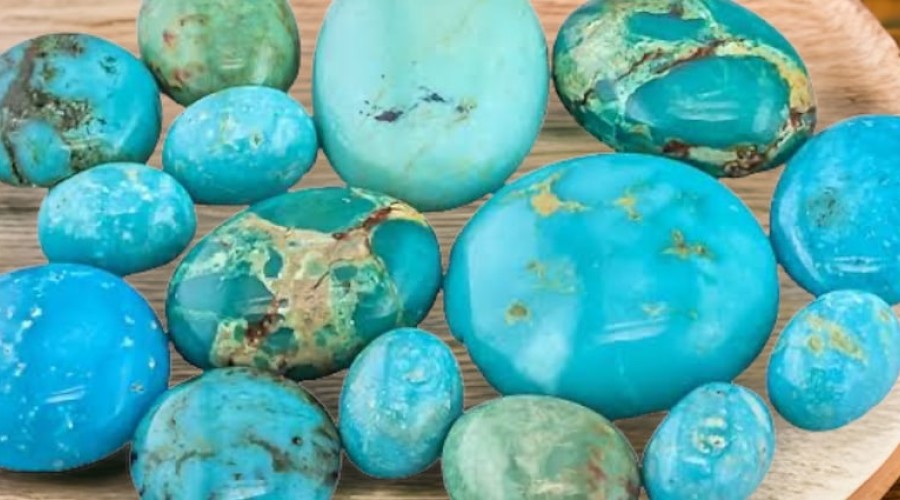Turquoise December's Birthstone

The birthstone for December is Turquoise. Turquoise is a blue-green mineral often used in jewellery and other decorative objects. It is believed to have various healing properties and is thought to bring good fortune and protection to those who wear it.
The origins of birthstones can be traced back to ancient civilisations, where it was believed that certain gemstones had special powers and properties that could bring good luck, health, and prosperity to those who wore them. Birthstones were often associated with the astrological signs of the zodiac and were thought to have a particular significance for people born under a sure sign.
Often given as gifts or worn as personal jewellery.
In modern times, birthstones are mainly seen as a way to celebrate and honour the month of a person's birth and are often given as gifts or worn as personal jewellery. The selection of specific gemstones for each month is determined by the Western zodiac, which assigns a different stone to each month of the year. The tradition of wearing birthstones has been adopted by many cultures worldwide and is an enduring and popular way to celebrate and honour the birth of a loved one.
Turquoise is a mineral that is often used in jewellery and decorative objects. It is a hydrated copper aluminium phosphate with a distinctive blue-green colour that ranges from pale to deep blue-green and can sometimes have a greenish-grey or yellowish cast. Turquoise is relatively soft and can be easily scratched or chipped, so it is often treated with a hardening agent or mounted in protective settings to preserve its appearance.
Turquoise has a long history of use in jewellery and decorative objects and has been prized by many cultures for its beauty and perceived healing properties. It is found in a number of countries around the world, including the United States, Mexico, China, and Iran. It has been used in a variety of cultures, including Native American, Egyptian, and Persian.
Turquoise is often associated with good fortune and protection.
Turquoise is often associated with good fortune and protection, and some believe it has the power to bring good luck, health, and prosperity to those who wear it. It is also thought to have calming and soothing properties and is sometimes worn as a talisman or protective charm. Despite its popularity, turquoise is a relatively rare and valuable gemstone, and the quality and size of the individual stone largely determine its price.
Myths
Turquoise is a gemstone prized for centuries for its unique blue-green colour and has been used in jewellery and other decorative objects for many cultures worldwide. There are a number of myths and legends surrounding turquoise, which is often associated with spiritual and healing properties. Here are a few common myths about turquoise:
- Turquoise has healing properties: Some people believe that turquoise has the ability to heal physical ailments and protect the wearer from harm. However, there is no scientific evidence to support these claims.
- Turquoise brings good fortune: Many believe that turquoise is a symbol of good luck and can bring prosperity and success to those wearing it.
- Turquoise changes colour to warn of danger: Some people believe that turquoise will change colour to warn the wearer of impending danger or illness. This is not true, as turquoise is a relatively stable gemstone and does not change colour under normal circumstances.
- Turquoise can be used to predict the future: Some cultures believe that turquoise has the ability to predict the future and can be used as a divination tool.
It's important to remember that these myths about turquoise are not supported by scientific evidence. The value of turquoise as a gemstone comes from its aesthetic qualities and durability.
